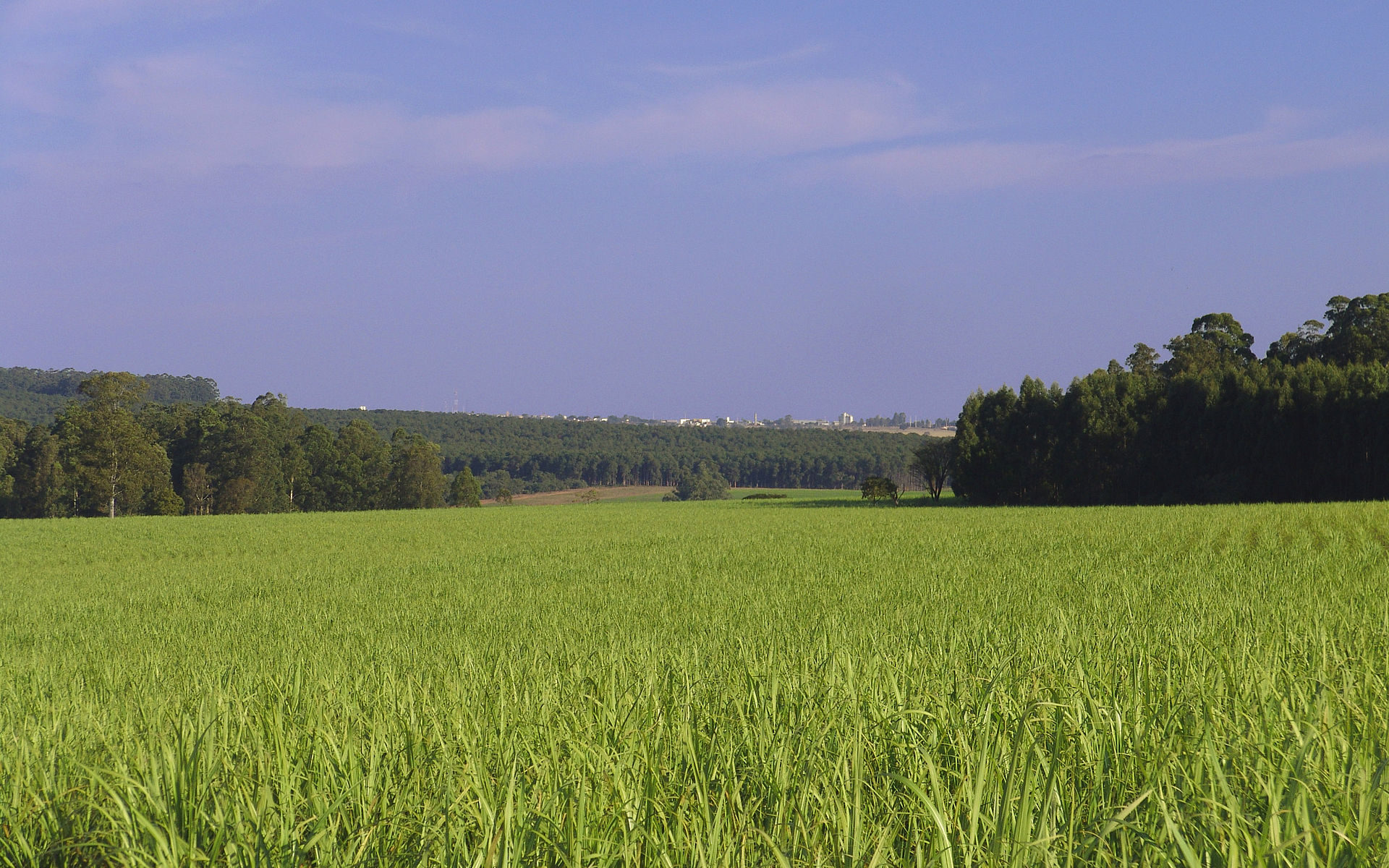Featured image: Sugarcane plantation to produce ethanol in Brazil by José Reynaldo da Fonseca on Wikipedia under CC BY 2.5.
In order to mitigate the effects of the climate crisis, we must stay under a 1.5℃ average global temperature increase from pre-industrial levels. To help reach this goal, there is growing interest in “negative emission technologies”, which are methods of removing greenhouse gases, like carbon dioxide, from the atmosphere. These carbon capture technologies have been around since the 1970s, but the best carbon capture technology might be as simple as plants. Fabian Stenzel and his team explain that cultivating fast-growing plant species, processing them into biomass, and capturing any emitted carbon dioxide therein, would actually result in negative emissions. Specifically, creating biomass through this method can capture upwards of 2 gigatons of carbon per year by 2050 (that’s close to the mass of 12 million blue whales). Burning this would also unlock an incredibly energy dense source of power. While burning the biomass would inevitably release carbon dioxide into the atmosphere, the process of growing it would drastically offset this by removing a much larger amount. However, one crucial question needs to be answered: will we have enough water to pull it off?
The researchers further explain that, while this process has a lot of benefits, it may increase competition for freshwater when implemented at a large scale. An estimated four billion people across the planet suffer from water scarcity, and tackling climate change this way may increase the burden on an already precarious system. To determine the effect of this carbon capture technology on Earth’s water supply, Stenzel’s team first defined water stress as the ratio between human withdrawals and available discharge. In other words, the demand of water versus how much is available for us to use. Second, the team compared three simulations of water stress.
The first served as a baseline: operating under current climate projections, to determine what water stress will look like at the end of the century. The second assessed a high amount of irrigated biomass production which was defined as 600 mega hectares. That’s more than twice the size of Argentina. A third simulation assessed biomass production while also implementing surface water restrictions in the form of environmental and hydrologic sustainability.
Stenzel et al. found that water stress will drastically increase in the first and second scenarios they modelled. More specifically, under current climate change projections, the amount of people experiencing water stress will increase from 2.28 billion people to 4.15 billion people by the end of the century. These numbers also account for a global population increase of 2 billion people. The team also found potentially troubling results about the global distribution of water stress relating from high biomass production. Their models illustrate that high irrigation activity in biomass production will extend water stress to areas across the planet that are not currently experiencing water shortages. While this outlook is bleak, there is a glimmer of hope in the form of their third simulation. While biomass production may increase water stress, sustainable water management may reduce its detrimental impact.
Top left: global distribution of water stress in the present. Top right: Projected water stress accounting for projected climate change conditions. Bottom left: Future water stress using bioenergy with carbon capture technology. Bottom right: Future water stress using bioenergy with carbon capture technology with sustainable water management. Figure reproduced from Stenzel et al. (2021) under CC BY 4.0.
Stenzel and his colleagues conclude that an emphasis on sustainable water management will reduce the population and amount of land experiencing water stress compared to that of current climate change projections. Therefore, it is theoretically possible to produce biomass on a large scale, but appropriate sustainable practices must be in place in order to prevent further stress on our planet’s freshwater sources. What these practices actually look like in terms of this negative emissions technology is the next challenge. Biomass production of this sort is not the only negative emissions technology. As these technologies continue to be developed and our reliance on them increases, we need to be cognizant of how we may inadvertently be perpetuating the damage we’re trying to fix.
Plants may help solve the climate crisis, but is there enough water for everyone? by Kevin Hurler is licensed under a Creative Commons Attribution 4.0 International License.

